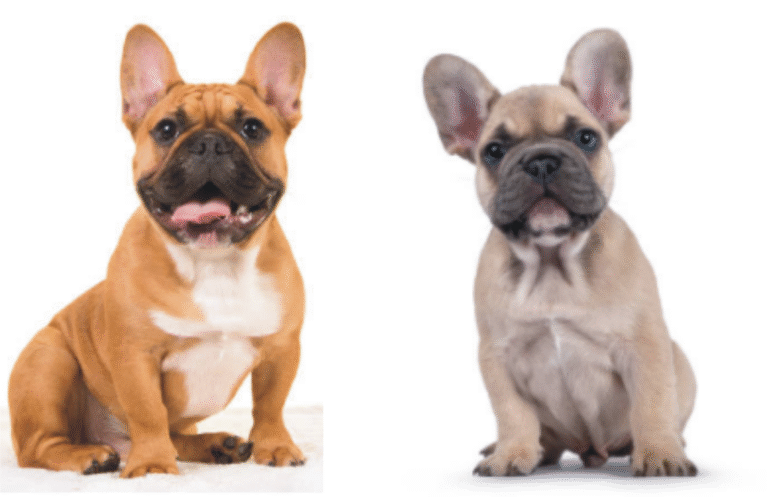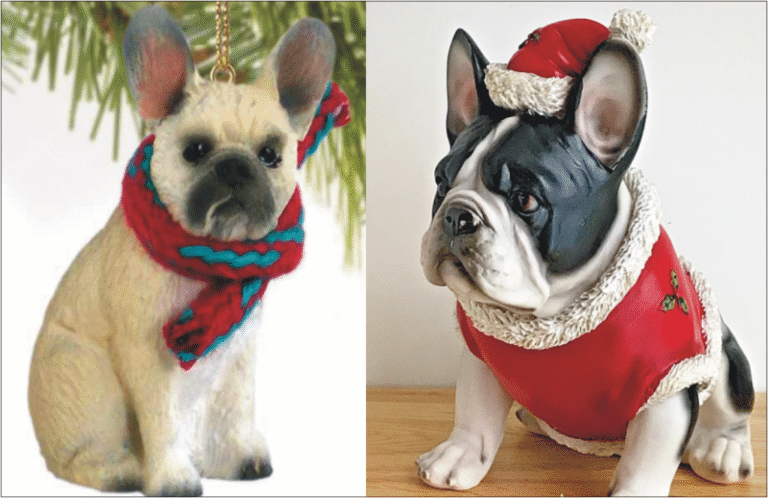Pug vs French Bulldog: Temperament, Grooming, Cost & More
Choosing between a Pug and a French Bulldog can feel like picking between two adorable best friends. Both breeds are affectionate, small-sized companions perfect for apartments or houses alike. But beneath their cuteness lies a set of traits that may be better suited to one owner than another.
The Pug vs French Bulldog debate isn’t just about looks—it’s about lifestyle compatibility, health care, personality quirks, and long-term commitment. While they may share flat faces and short legs, their energy levels, maintenance needs, and temperaments differ in meaningful ways.
In this article, we’ll explore every angle to help you make the most informed choice possible. From grooming to health, temperament to costs—we break it all down in a side-by-side comparison so you can decide which lovable pup is right for you.
- Both breeds need careful exercise in warm weather.
- French Bulldogs tend to be more expensive to purchase.
- Both are perfect for apartment living and small spaces.
- French Bulldogs require regular ear and fold cleaning.
Ready to explore the full comparison? Let’s dive in.
History and Origins of Both Breeds
Pugs trace their history back to ancient China, where they were bred as lapdogs for royalty. They were highly favored by emperors and nobility, prized for their affectionate demeanor and distinct appearance. Eventually, they made their way to Europe and became popular among monarchs and aristocrats.
French Bulldogs, on the other hand, originated in England as smaller companions to lace workers. When these workers migrated to France, they brought the breed along. Over time, the French adapted the breed into what we know today—compact, muscular dogs with iconic bat-like ears.
Both breeds share a purpose-driven history: they were bred primarily for companionship. While Pugs carry an aura of ancient elegance, French Bulldogs reflect the charm of urban life and artistic communities in 19th-century Paris.
- Pugs were bred as royal companions in ancient China.
- French Bulldogs originated as lace workers’ companions in England.
- The French refined French Bulldogs into the breed we recognize today.
- Both breeds became popular due to their affectionate nature.
- Their histories are rooted in companionship, not labor or hunting.
Their histories show that both breeds were built for love and loyalty.
Physical Appearance and Build
While both Pugs and French Bulldogs are small and stocky, they differ significantly in their physical traits. Pugs are known for their round, wrinkled faces, curled tails, and prominent eyes. Their bodies are slightly more cylindrical, and their tails rest tightly coiled over their backs.
French Bulldogs are more muscular and broad-chested with shorter tails and bat-like ears that stand upright. Their snouts are flatter and more compressed, contributing to more noticeable breathing issues. The Frenchie has a squarer, blockier silhouette overall.
In terms of weight, French Bulldogs are slightly heavier, averaging 16–28 lbs compared to the Pug’s 14–18 lbs. Coat colors also vary, with Pugs primarily seen in fawn and black, while Frenchies come in a wider range, including brindle, cream, and blue.
- Pugs have curled tails and rounder faces.
- French Bulldogs have flat faces and prominent bat-like ears.
- Pugs are usually smaller in frame and lighter in weight.
- French Bulldogs have broader chests and stockier bodies.
- Frenchies come in more diverse coat colors than Pugs.
Both dogs are irresistibly cute, but their look might match different lifestyles.
Temperament and Personality Traits
Both breeds are loving and devoted, but their personalities offer some contrast. Pugs are energetic, comical, and thrive in social environments. They enjoy being the center of attention and will often perform to get laughs from their owners.
French Bulldogs are more relaxed and composed. They are incredibly loyal, form strong bonds with their humans, and are often content simply lounging next to you. While not aggressive, they may show stubbornness in training.
Families with children or other pets will find either breed suitable. However, Pugs may have a higher tolerance for noise and chaos, while Frenchies prefer calmer, quieter surroundings with routine.
- Pugs are outgoing, cheerful, and social butterflies.
- Frenchies are loyal, mellow, and cuddly homebodies.
- Both breeds bond deeply with their owners.
- Pugs handle chaotic environments better than French Bulldogs.
- Frenchies thrive in quiet, stable households.
Your lifestyle and energy level will guide the best personality match.
Health and Common Medical Concerns
Health is a key consideration when comparing these breeds. Both suffer from brachycephalic syndrome, which can lead to difficulty breathing, especially in hot or humid conditions. Exercise should be limited to cool hours of the day.
Pugs often face additional health issues including eye problems, obesity, and hip dysplasia. Their eyes are more exposed, making them vulnerable to ulcers and infections. Weight control is essential due to their love of food and low metabolism.
French Bulldogs are prone to IVDD (spinal problems), hip dysplasia, and skin allergies. Their compact structure can result in joint strain, and allergies may lead to itching and chronic irritation. Regular vet check-ups and controlled environments are essential.
- Both breeds suffer from short-snouted breathing issues.
- Pugs are more likely to develop eye problems and obesity.
- French Bulldogs are prone to hip and spine disorders.
- Frenchies also commonly suffer from skin allergies.
- Both breeds need moderate exercise and regular vet visits.
Understanding their vulnerabilities is vital for long-term care planning.
Grooming and Maintenance Needs
Both dogs are low-maintenance in terms of grooming, but they each have specific needs. Pugs have a double coat, which causes them to shed more heavily, especially during seasonal changes. Weekly brushing helps control loose fur and dander.
French Bulldogs have a single coat and shed less, but their skin folds need frequent cleaning to prevent infections and bad odor. Their ears also require routine inspection and cleaning due to their open shape.
Both breeds benefit from regular bathing, nail trimming, and tooth brushing. Their facial wrinkles are cute but can harbor bacteria if not cleaned regularly.
- Pugs shed more due to their double coat.
- French Bulldogs need regular skin fold cleaning.
- Both breeds need wrinkle and ear hygiene.
- Weekly brushing reduces shedding and skin issues.
- Routine baths and nail care are essential for both.
Keeping your pup clean will help prevent many common health issues.
Exercise and Activity Levels
Pugs and French Bulldogs both enjoy light physical activity. Neither breed is built for endurance or agility, but short daily walks and indoor play sessions are ideal. They both overheat quickly and should avoid strenuous play in hot weather.
Pugs tend to be more playful and excitable, which may require more mental stimulation and interactive toys. Frenchies are content with a walk and a good nap, making them great for owners with a more relaxed lifestyle.
Consistency in routine is key. Over-exercising or ignoring exercise needs in either breed can lead to weight gain or anxiety.
- Pugs enjoy short bursts of playful activity.
- French Bulldogs prefer calm walks and restful play.
- Both breeds overheat easily due to their flat noses.
- Interactive toys help stimulate Pugs mentally.
- Routine and consistency prevent behavior problems.
Your own activity level should guide how much engagement they’ll need.
Cost and Ownership Considerations
Both breeds come with significant ownership costs. Pugs generally have a lower purchase price, but their grooming and health care expenses can add up. Their medical needs are frequent, especially concerning eyes and weight.
French Bulldogs are more expensive to purchase, often costing thousands due to breeding challenges. Their health concerns can lead to higher vet bills, particularly for spinal and allergy treatments.
You’ll also need to factor in insurance, food, grooming tools, and emergency care. Over time, French Bulldogs tend to be more expensive overall, despite lower grooming needs.
- Pugs cost less initially but need more grooming attention.
- French Bulldogs are one of the priciest breeds to buy.
- Both breeds require pet insurance due to health risks.
- Medical bills can be high, especially for Frenchies.
- Balanced diet and preventive care can save money long-term.
Budget carefully for whichever breed you choose—quality care is essential.
Quick Breed Comparison Table
| Feature | Pug | French Bulldog |
| Weight | 14–18 lbs | 16–28 lbs |
| Temperament | Energetic, playful | Calm, affectionate |
| Lifespan | 12–15 years | 10–12 years |
| Shedding | High | Moderate |
| Health Concerns | Breathing, eyes, obesity | Hip issues, skin allergies |
| Exercise Needs | Moderate | Moderate |
| Grooming | Higher (double coat) | Lower but skin cleaning |
This quick glance can help finalize your decision.
Conclusion
Both the Pug and the French Bulldog make delightful companions, each bringing their own personality and care requirements to the table. Pugs are playful, sociable, and slightly more energetic, while French Bulldogs are calm, affectionate, and excellent for quieter households.
Choosing between them depends on your lifestyle, budget, and daily routine. If you’re looking for a cuddle buddy who’ll make you laugh, a Pug may be ideal. If you prefer a relaxed, low-energy companion with a little more sturdiness, the French Bulldog could be your perfect fit.
Whichever breed you choose, you’re guaranteed a lifetime of love, loyalty, and adorable moments.





